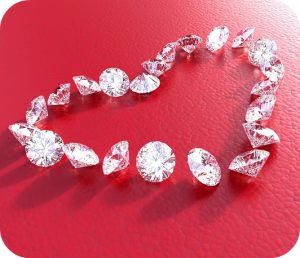 Although certain candies will be hard to come by today, plenty of people around the world will show their love by giving jewelry to their valentines. That might not be the case in China, however, where more women are opting to buy bling for themselves rather than wait for their partners to do so. For example, a Shanghai-based business manager named Crystal Zhu said that her boyfriend’s “nice but a bit dull” selections aren’t as expressive as she’d like. “The ones I pick for myself are more bold and playful, I feel more fun when I’m wearing them,” said Zhu. “For me, jewelry is not just a display of wealth, but a way to reflect my personality and identity to others.”
Although certain candies will be hard to come by today, plenty of people around the world will show their love by giving jewelry to their valentines. That might not be the case in China, however, where more women are opting to buy bling for themselves rather than wait for their partners to do so. For example, a Shanghai-based business manager named Crystal Zhu said that her boyfriend’s “nice but a bit dull” selections aren’t as expressive as she’d like. “The ones I pick for myself are more bold and playful, I feel more fun when I’m wearing them,” said Zhu. “For me, jewelry is not just a display of wealth, but a way to reflect my personality and identity to others.”
This perspective is becoming increasingly common among China’s growing class of affluent women. A 2016 survey found that 37 percent of Chinese women purchased jewelry for themselves while just 30 percent of respondents said they received jewelry from their partner. Marketers have taken notice of this trend and are responding accordingly. “Marketing [of jewelry] in China nowadays focuses on young women who are looking for self-pampering supported by their financial power, particularly to mark personal milestones,” said Zhenzhen Liu, director of global marketing for a jewelry trade group. “Women see diamonds and platinum as things to go out and get for themselves.”
In fact, a report by the diamond company DeBeers found that “self-purchases” accounted for a third of all Chinese diamond sales in 2018. Along with switching the focus of marketers from gift-giving to self-expression, these recent changes among Chinese jewelry buyers have also encouraged more women to enter the marketplace as entrepreneurs. “The phenomenon of women buying jewelry for themselves has been one of the most influential industry mega trends of recent times,” said Kurt Zbinden, vice-president of Asia-Pacific operations at Swarovski Gemstones. “It has effects on both the design and marketing and has encouraged the rise of female designer-jewelers, who make fine jewelry relevant again to this increasing consumer group.”
Questions:
- How have jewelry marketers responded to the new buying habits of China’s growing class of affluent women?
- Besides changing the ways that marketers target Chinese consumers, how else have the new jewelry buying habits of Chinese women affected the marketplace?
